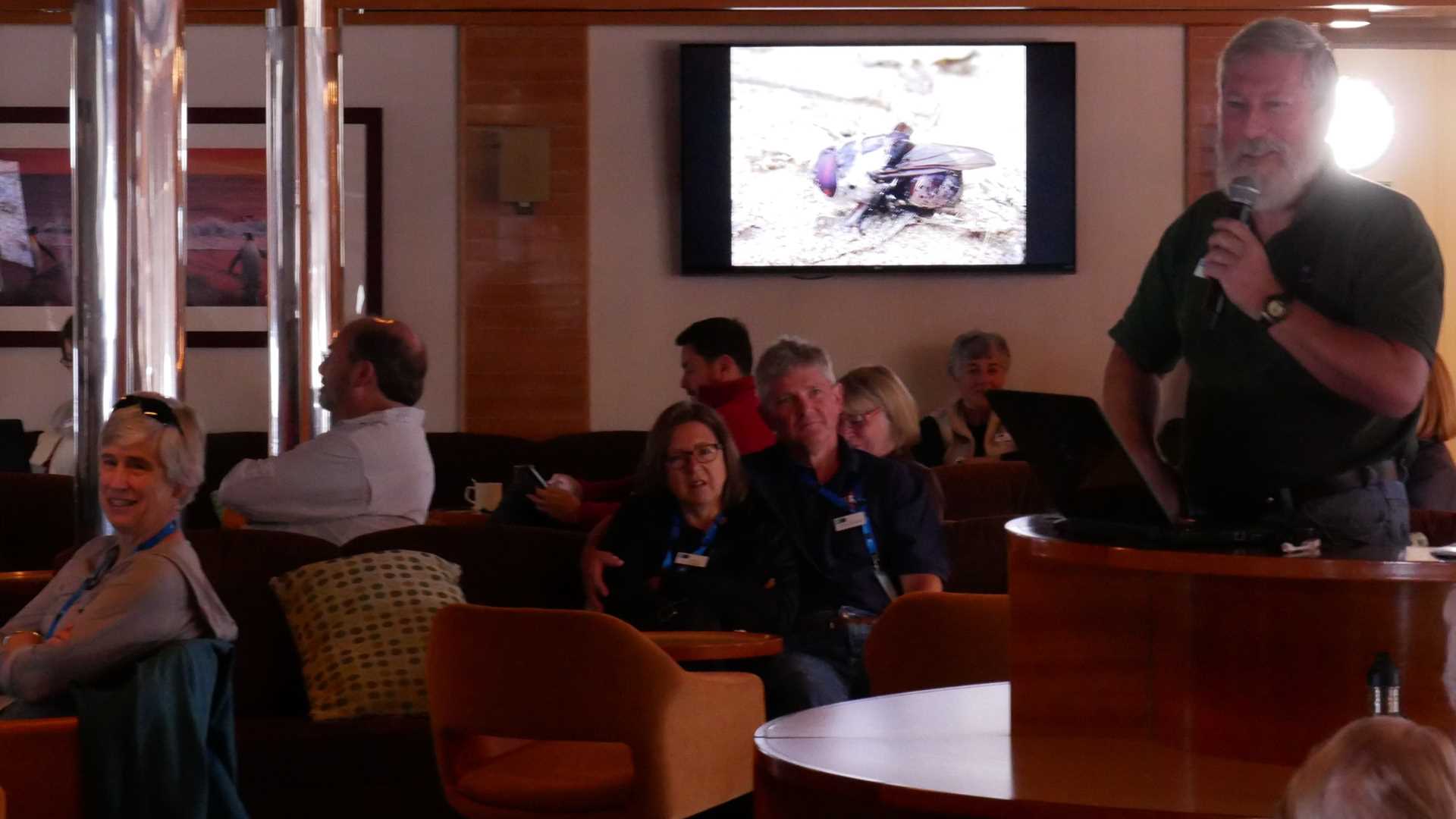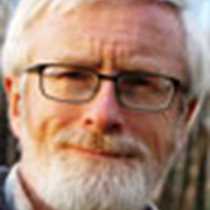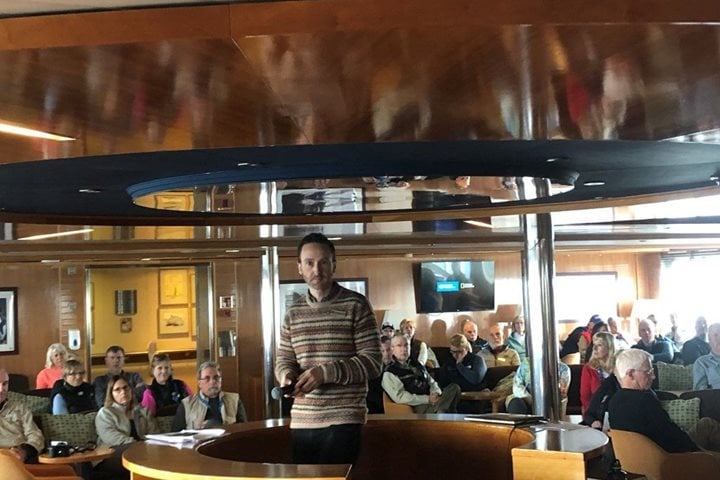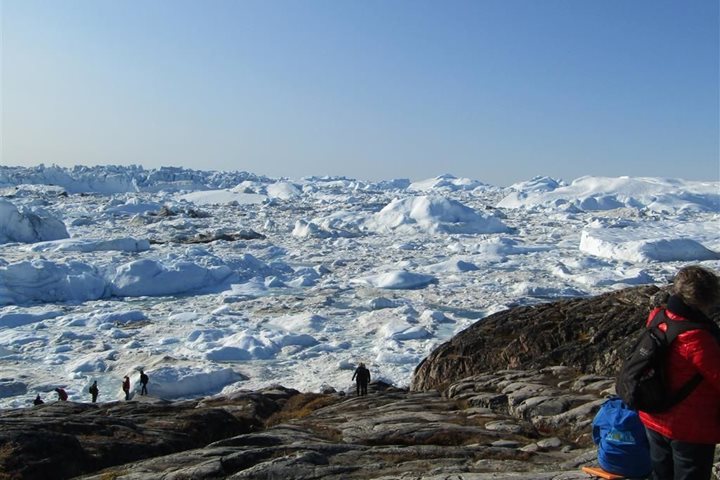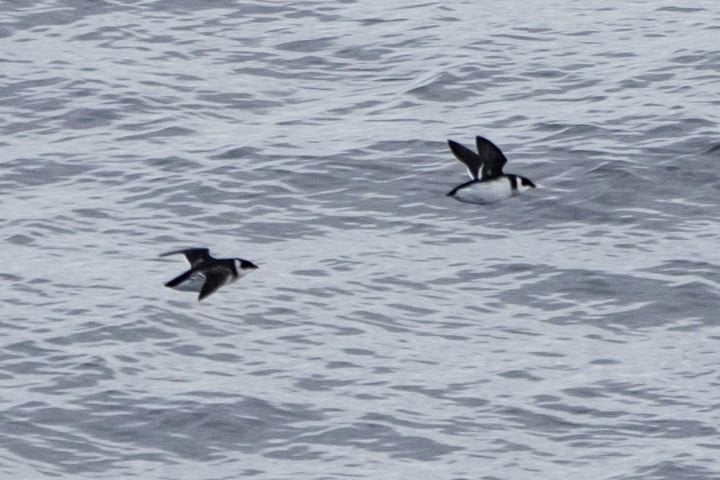Today we steamed across Baffin Bay, the vast expanse of water between Greenland and Arctic Canada. Baffin Bay is named for the 17th century pilot and navigator William Baffin, but Baffin and his English confreres by no means discovered the Bay, whose shores have been inhabited by Inuit and their precursors for thousands of years.
In the main lounge, as views of icebergs appeared and disappeared out the windows, we settled in for a day of intellectual stimulation through talks and lectures from our specialists onboard. The first presentation was by Global Perspectives guest speaker Bob Bindschadler, a renowned NASA scientist who has studied Antarctic glaciers for decades. Bob’s talk, called “Earth’s Bi-polar Disorder,” used the glacier story to make an ironclad case for the reality of climate change. Guests who heard the talk used superlatives to describe the clarity and the impact of the presentation.
Next on the roster was Tom Ritchie, who has spent 40 amazing years as a Lindblad field naturalist. Tom’s talk was all about adaptation to polar life. It covered everything from wooly willows to wooly mammoths, and from wooly bears (the larvae of a type of moth) to polar bears. As Tom explained, nature has a bottomless bag of tricks to deal with the cold. Some insects manufacture special anti-freeze proteins so they won’t freeze in winter, while Arctic frogs simply let themselves freeze like an ice cube, while using physiological sleight-of-hand to keep deadly ice crystals from forming inside vital body parts.
In the afternoon, National Geographic photographer Michael Melford revealed the story behind his many cover and inside photos for National Geographic publications, including the National Geographic Magazine itself – which is dubbed the Yellow Magazine by insiders. His stories revealed the many twists and turns that take place before the shutter is clicked on photos that are both spectacular and sublime.
We rounded out the afternoon with Global Perspectives guest speaker Stephen Cunha’s account on the idea of national parks. The park concept has its roots centuries ago, with precursors in places as diverse as Mongolia and England, but it came into its modern form in 1864 when President Lincoln signed a bill to assign land for the preservation and public use of what would become Yosemite National Park. With the creation of Yellowstone National Park in 1872, the park idea quickly spread across the United States and around the world, and has since been a major force in worldwide conservation.
Our day ended with a screening of the film Nanook of the North, a pioneering docudrama from 1922 that recounts the life of an Inuit hunter and his family.

